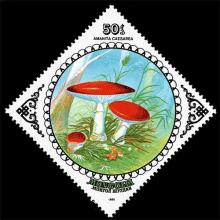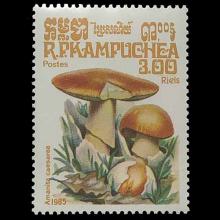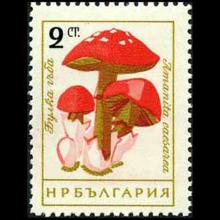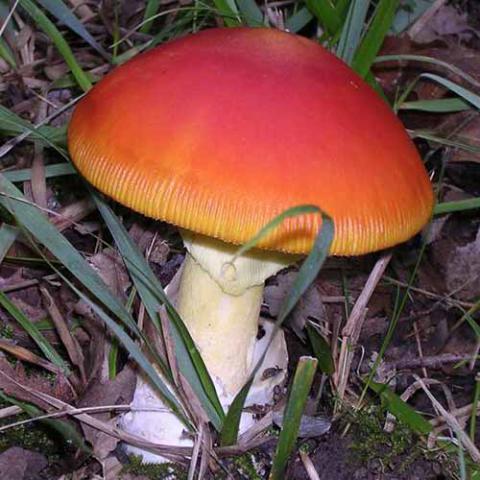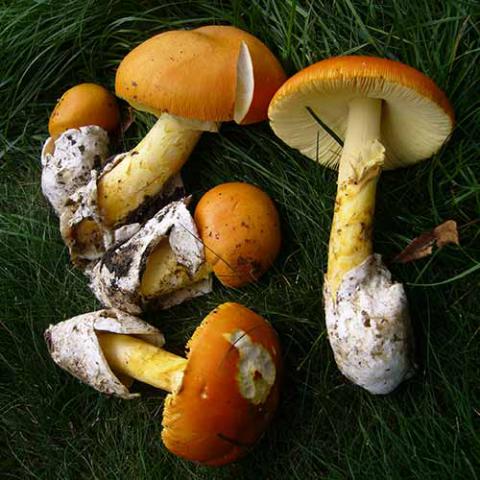NAMES
TAXONOMY
FUNGI ID
THERAPEUTIC
Mongolia
Issued:
Stamp:
Amanita caesarea
Cambodia
Issued:
Stamp:
Amanita caesarea
Bulgaria
Issued:
Stamp:
Amanita caesarea
Mongolia
Issued:
Stamp:
Amanita caesarea
Cambodia
Issued:
Stamp:
Amanita caesarea
Bulgaria
Issued:
Stamp:
Amanita caesarea
Mongolia
Issued:
Stamp:
Amanita caesarea
Cambodia
Issued:
Stamp:
Amanita caesarea
Bulgaria
Issued:
Stamp:
Amanita caesarea
Mushrooms have come out galore!
LANDER SANTAMARÍA, October 19, 2020
After the abundant rains in recent days, the "coup" caused the outbreak of hundreds of kilos throughout the region.
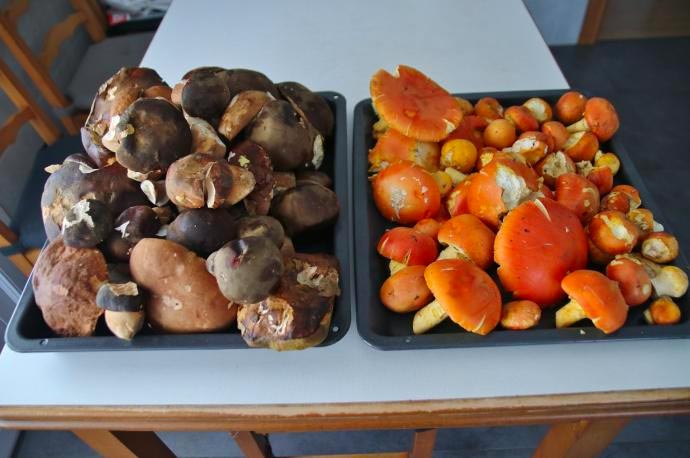
The second outbreak of fungi, a month after the first, has turned the Bidasoa basin into a mycological orchard that contributes hundreds of kilos thanks to the abundant rains in recent days. To the satisfaction of fans of their search and of the gourmets who appreciate them as one of the most tasty fruits that Mother Nature offers, the outbreak has been very generous between Xareta, Baztan, Bertizarana, Malerreka and Bortziriak; favored baskets full for many.
In the country of Bidasoa, it is considered that the most favorable times for fungi to emerge are the current autumn and spring, although on some occasions they have sprung abundantly in summer if the conditions of rain, heat and soil moisture occur. On this occasion, after the heavy rains (more than 80 liters / m2) in recent days and the heat that kept the land, this second "blow" has been especially generous.
Those who know about this already warned that after the rains there would be a good "blow" of mushrooms, which in their favor must be recognized has been fulfilled. And it has also coincided with the waning lunar phase, which is also another condition that is considered necessary, although others, more skeptical, affirm that, like those in Bilbao, "the mushrooms come out when they want to."
The fact is that they have sprouted, to the delight of many, in a generalized way everywhere and in large quantities, which, in addition to being eaten alone or in scrambled eggs in general, accompanying some meats, has served to fill the freezers and reserve them for when is deemed convenient. Curiously, in the previous "coup", striking quantities of "gorringo" (Amanita Caesarea, the Caesar mushroom), a species considered of great quality, were collected in some places, such as Sunbilla, which has not happened now, although lots of them have Boletus Edulis (beltza fungus, in Basque) or Boletus aereus (txuria) somewhat lighter.
In the region, the species of mushrooms that are collected because they are believed to be edible and safe are counted and fans are limited to the varieties mentioned and some such as the gibelurdiña (Russula virescens) and little else. In this sense, the customs continue as they did about 60 years ago, when Julio Caro Baroja said in his Rural life in Vera de Bidasoa: "Few kinds of mushrooms are collected here, although they are highly appreciated delicacies."
Now people pick up what they know and some more than before having expanded their knowledge in mycology, and choose not to risk it. In this case, the much appreciated friend and Txistulari Pepe Elizalde (+), an expert doctor who treated numerous poisonings and saved many lives, deserves to be remembered. Prudence is always advisable in cases of doubt, because, as the writer Iñaki Linazasoro said with his usual wit, "all mushrooms are edible, but some only once".
Genus species (Fungi): Amanita caesarea
Amanita caesarea, commonly known as Caesar's mushroom, is a highly regarded edible mushroom in the genus Amanita, native to southern Europe and North Africa. While it was first described by Giovanni Antonio Scopoli in 1772, this mushroom was a known favorite of early rulers of the Roman Empire.
It has a distinctive orange cap, yellow gills and stipe. Organic acids have been isolated from this species. Similar orange-capped species occur in North America and India. It was known to and valued by the Ancient Romans, who called it Boletus, a name now applied to a very different type of fungus.
Although it is edible, the Caesar's mushroom is closely related to the psychoactive fly agaric, and to the deadly poisonous death cap and destroying angels.

